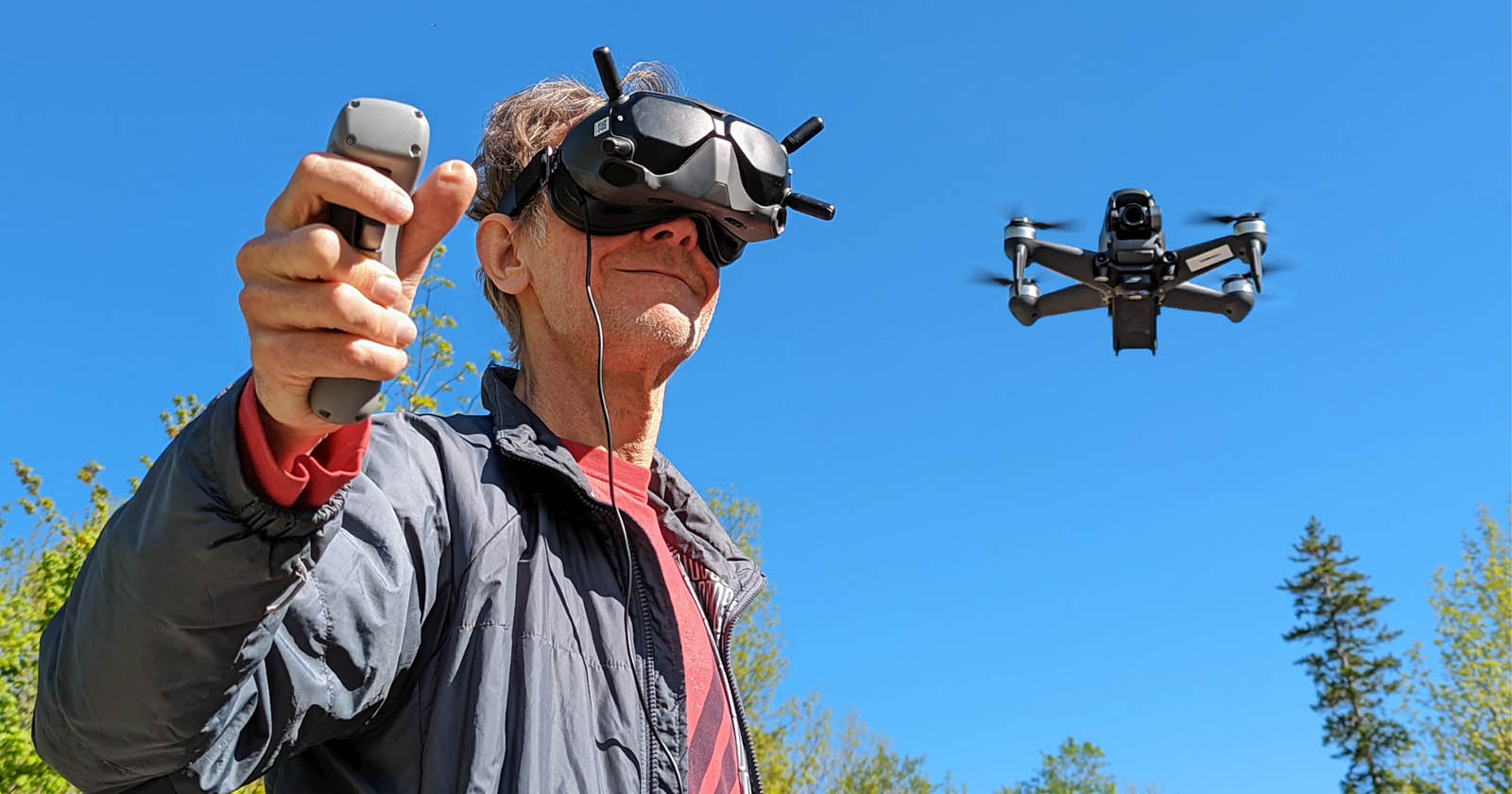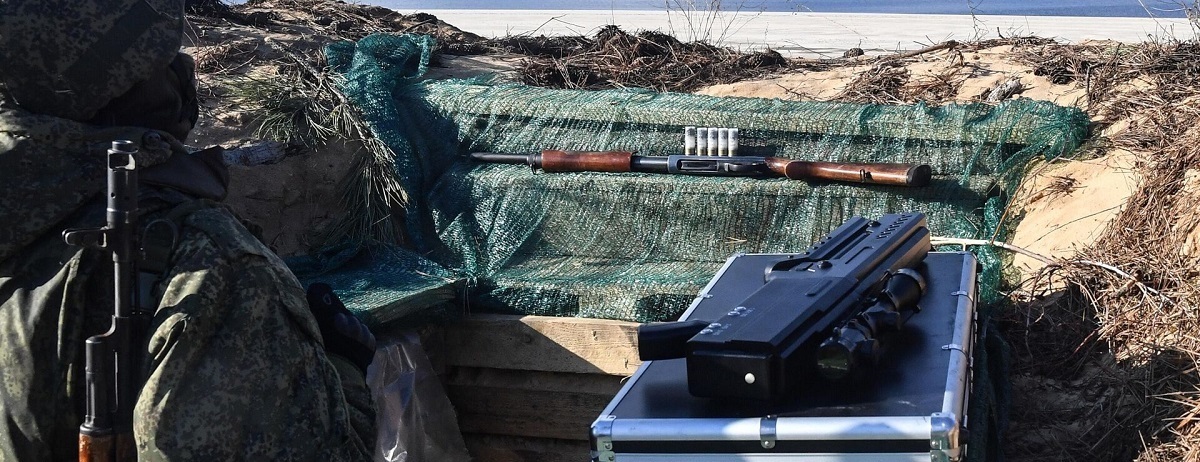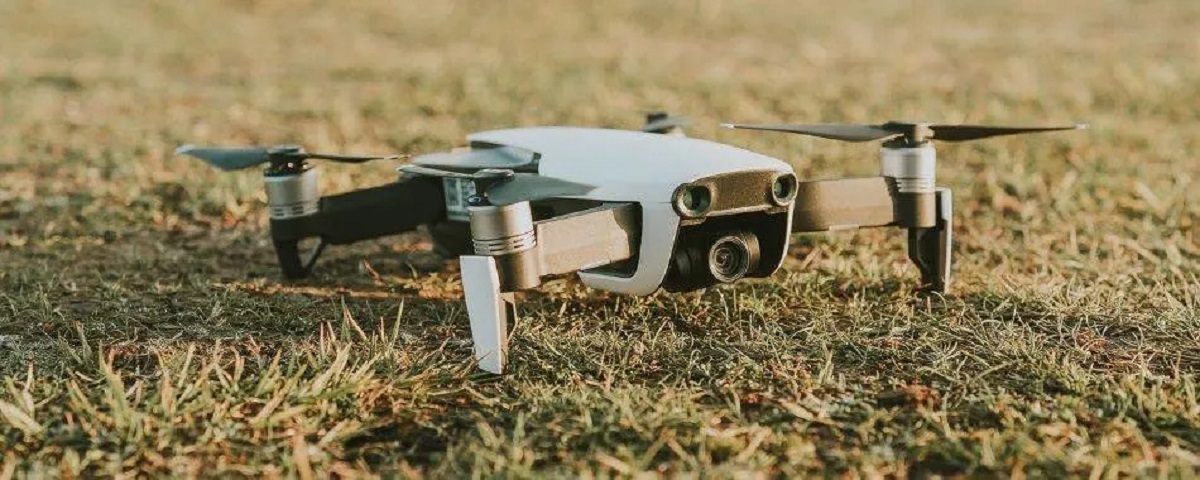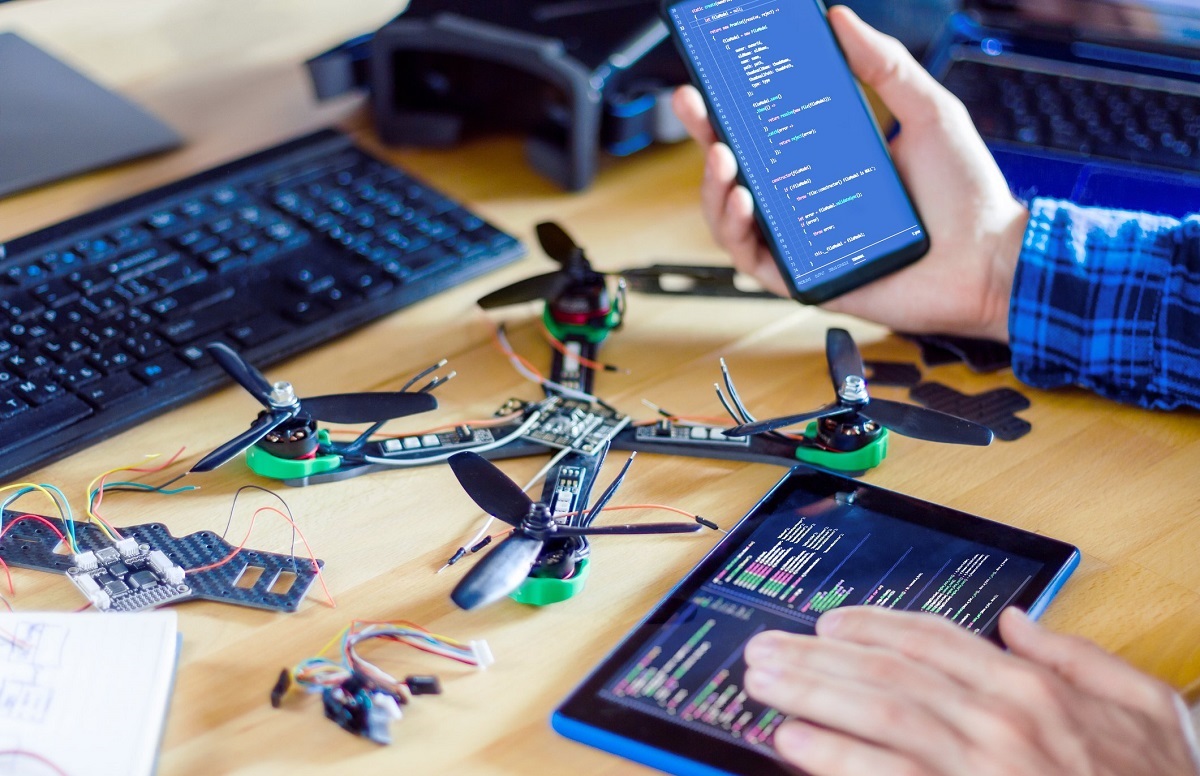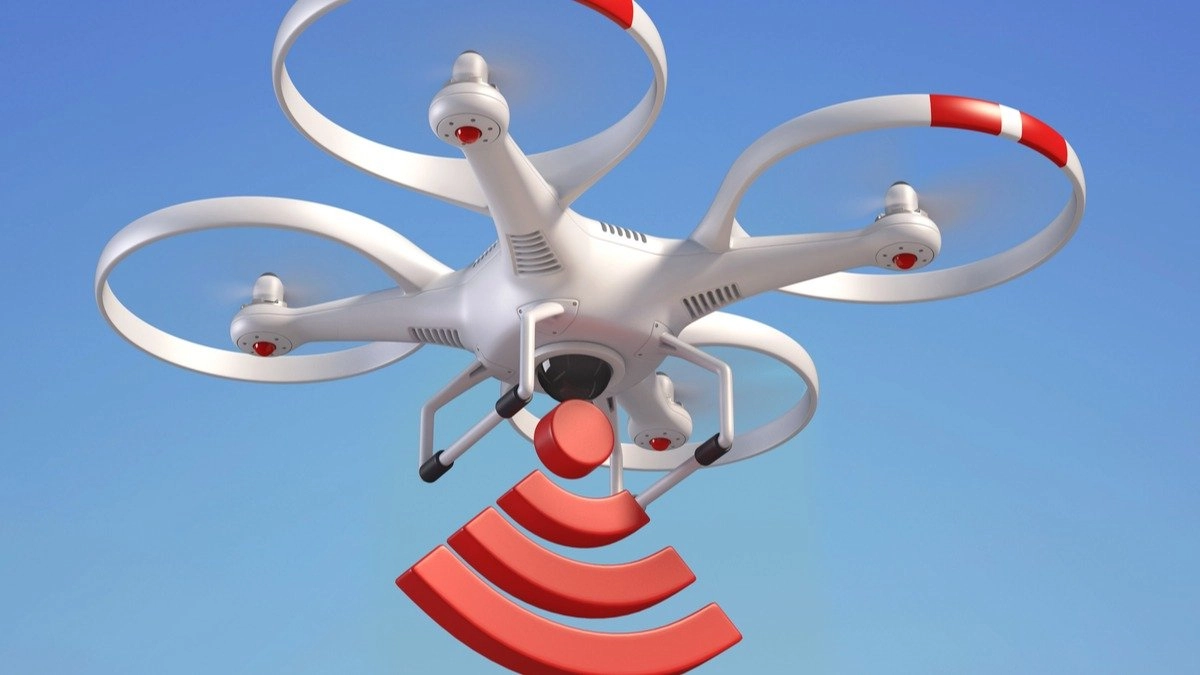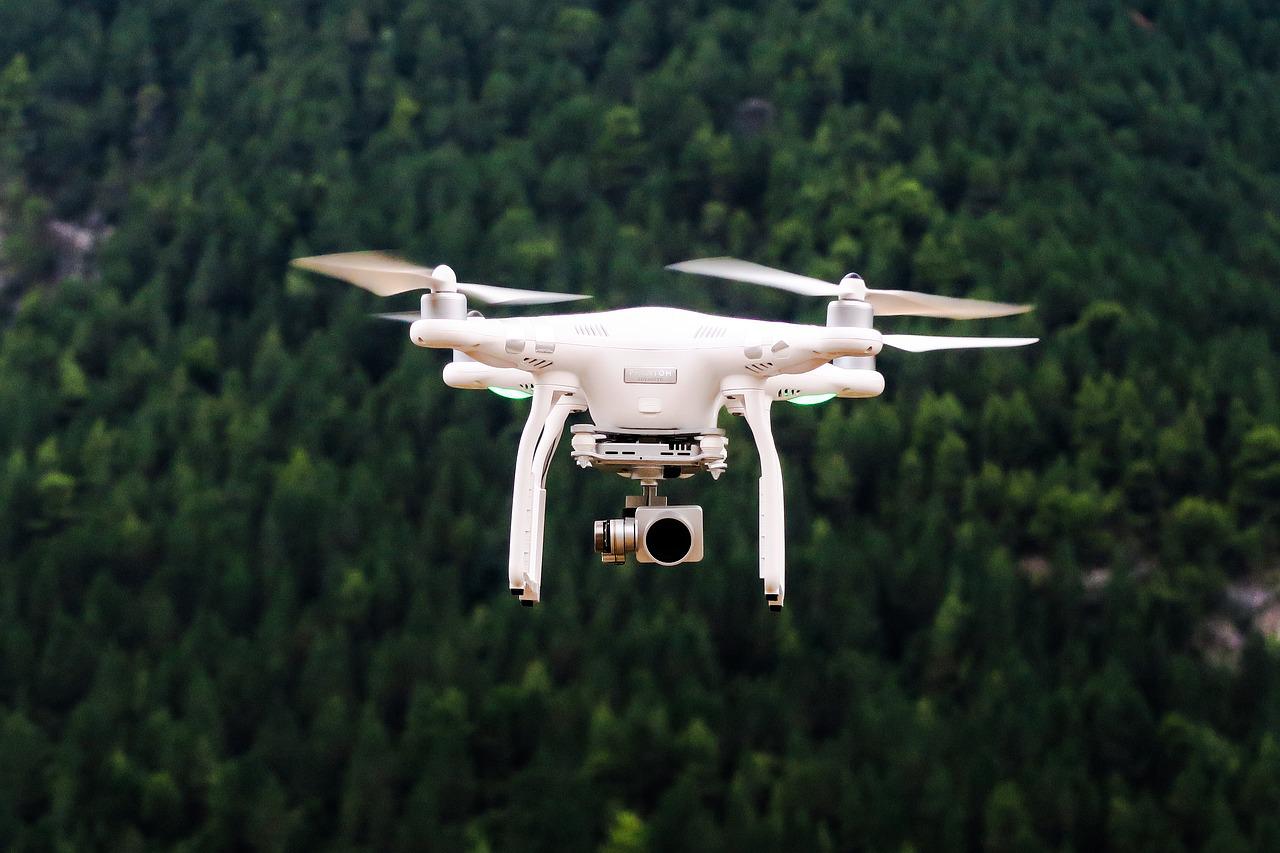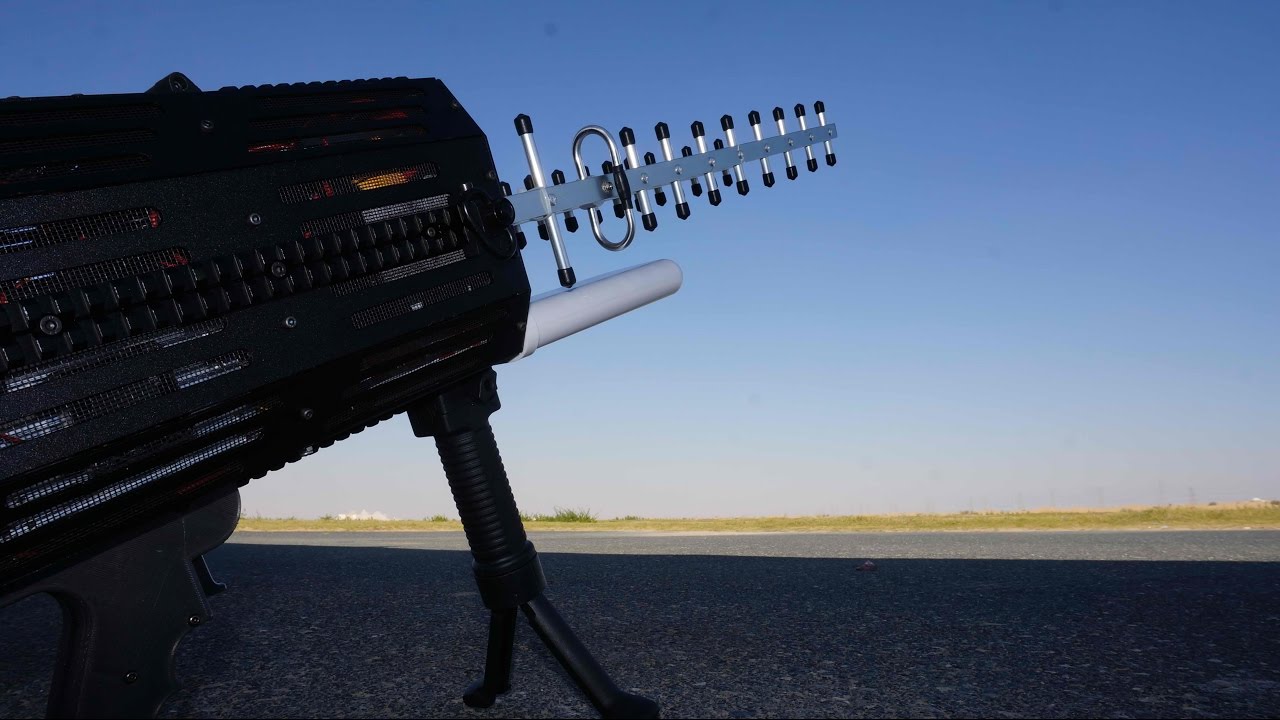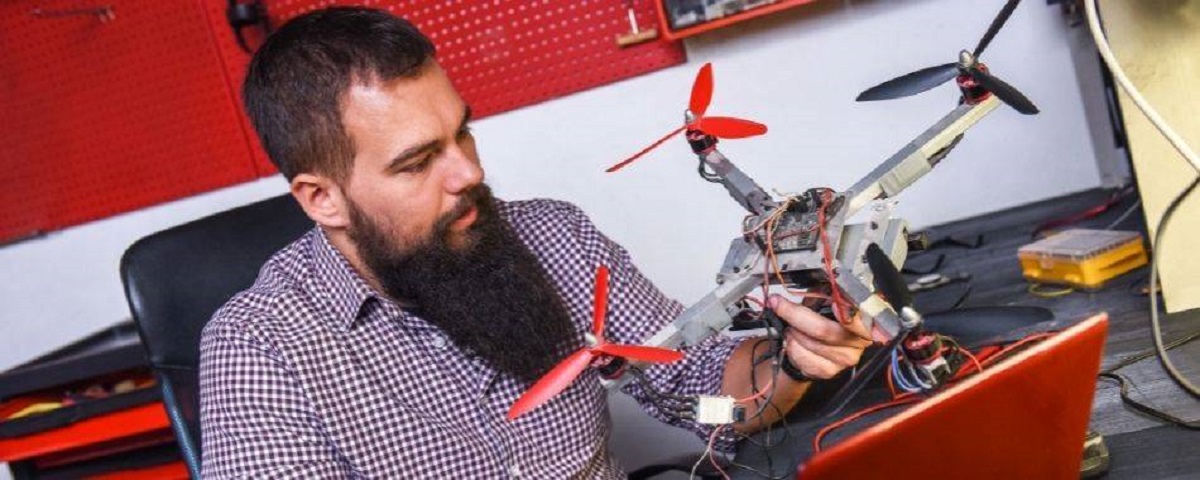What Is FPV On A Drone
First-person view (FPV) is a thrilling and immersive experience that allows drone pilots to see a real-time video feed from their drone’s perspective. It provides a unique and exhilarating way to fly a drone, as if you were sitting comfortably in the cockpit. FPV is not just a feature, but a whole new way of experiencing the world from above.
When you fly a drone without FPV, you rely on line-of-sight observations, which can be limiting. With FPV, you get a live video stream that helps you navigate, perform aerial stunts, and capture incredible footage with precision and control. It takes the excitement of drone flying to a whole new level, making you feel like a bird soaring through the sky.
FPV technology has revolutionized the drone industry, providing enthusiasts and professionals alike with an unprecedented level of immersion and control. It allows for real-time visual feedback, enabling pilots to make split-second decisions and adjust their flight path accordingly. Whether you’re racing through obstacle courses or exploring breathtaking landscapes, FPV enhances the experience by giving you a real-time view of your drone’s flight.
To experience FPV, you need specialized equipment. A drone with FPV capabilities typically includes a camera mounted on the front or underneath, which transmits a live video feed to a remote controller or a pair of goggles worn by the pilot. The video signal is transmitted wirelessly in real-time, providing a seamless and immersive flight experience.
FPV is not limited to recreational use; it has become an invaluable tool for various industries. From aerial photography and videography to search and rescue operations, FPV provides a unique perspective that was previously inaccessible. It allows for precise maneuvering in tight spaces, capturing high-quality footage, and performing complex tasks with ease.
In the next sections, we will delve deeper into how FPV works, the components required, the advantages and disadvantages, and some tips for using FPV effectively.
Introduction
Drones have become increasingly popular in recent years, offering a wide range of applications and possibilities. From aerial photography and videography to recreational flying, drones have captured the imagination of people all over the world. One of the most exciting features of drones is the ability to experience first-person view (FPV) flying.
FPV has revolutionized the way we interact with drones, allowing pilots to see and experience the world from the drone”s perspective. It provides a captivating and immersive experience, as if you were actually sitting in the cockpit of the drone. With the help of FPV technology, pilots can fly with precision, navigate through challenging environments, and capture stunning footage that was once impossible to achieve with traditional line-of-sight flying.
In this article, we will explore what FPV is, how it works, the components needed, and the advantages and disadvantages of using FPV on a drone. Whether you are a beginner or an experienced drone pilot, understanding FPV is essential to fully unleash the potential of your drone flying experience.
Through this article, we aim to provide insights into the world of FPV and help you make informed decisions when it comes to choosing the right FPV system for your drone. We will also share some tips and best practices to ensure a safe and enjoyable FPV flying experience.
So, if you’re ready to take your drone flying to new heights and experience the thrill of flying like a bird, let’s dive into the world of FPV on a drone.
What is FPV?
FPV stands for first-person view, and it refers to the capability of a drone pilot to see a live video feed from the drone’s perspective in real-time. It provides a unique and immersive flying experience, as if you are actually inside the drone, seeing what it sees. With FPV, you can fly the drone as if you were sitting comfortably in the pilot’s seat, navigating through the skies with a newfound sense of presence and control.
The concept of FPV originated from the world of remote-controlled vehicles, particularly in the realm of FPV racing. As drones evolved, so did the technology behind FPV, allowing for a seamless video transmission from the drone to the pilot’s controller or goggles. This real-time video feed allows pilots to have a first-person perspective of the flight, simulating the feeling of being inside the drone itself.
FPV provides a whole new level of excitement and engagement for drone pilots. It enhances the flying experience by providing a dynamic and immersive view of the surroundings, allowing pilots to explore and navigate with precision. Whether you are flying for recreational purposes, capturing aerial footage, or participating in competitive racing, FPV adds an extra layer of excitement and challenge to your drone flying adventure.
With FPV, drone pilots can execute precise maneuvers, fly at high speeds, and perform intricate aerial stunts with ease. The live video feed offers real-time visual feedback, helping pilots to course-correct on the fly, avoid obstacles, and capture stunning footage from unique perspectives. It unlocks a whole new world of possibilities and creative opportunities, empowering pilots to push the boundaries of what is possible with their drones.
In the next section, we will explore how FPV works and the components that are involved in creating the immersive FPV experience. So, strap on your goggles and get ready to dive into the mesmerizing world of first-person view on a drone.
How Does FPV Work?
To understand how FPV works, let’s take a closer look at the components that make it possible. The main components of an FPV system include a camera on the drone, a video transmitter, a receiver, and a display device such as goggles or a screen.
The process starts with the camera mounted on the drone. This camera captures real-time video footage of the drone’s surroundings. The video is then transmitted wirelessly to a video transmitter located on the drone. The video transmitter converts the video feed into a radio frequency signal, which is then sent out to the receiver.
The receiver is connected to the display device, which can be a set of FPV goggles or a screen. When the receiver receives the radio frequency signal, it converts it back into a video feed that can be viewed in real-time. The display device allows the drone pilot to see what the drone’s camera sees, creating an immersive and first-person perspective.
FPV goggles, in particular, offer a more immersive experience as they block out external light and provide a wide field of view. They simulate the feeling of being inside the drone, giving you a complete view of the flight path and the surroundings. Some goggles even have head tracking capabilities, allowing you to control the camera’s direction by moving your head.
The video transmission between the drone and the display device is typically done using radio frequencies such as 5.8GHz or 2.4GHz. The range of the FPV system depends on various factors such as the transmitter power, signal interference, and the environment in which you are flying. It’s important to choose a system with a reliable and robust signal to ensure a stable and uninterrupted FPV experience.
As technology continues to advance, FPV systems are becoming more sophisticated, offering higher video resolutions, lower latency, and improved range. Some systems even allow for HD video transmission, providing an incredibly clear and detailed view of the flight.
Overall, FPV technology works by capturing the drone’s live video feed, transmitting it wirelessly to a receiver, and displaying it on a screen or goggles in real-time. It creates an immersive and thrilling flying experience, allowing pilots to explore, navigate, and capture incredible footage with precision and control.
In the next section, we will explore the different components needed to set up an FPV system, helping you choose the right equipment for your drone.
The Components of FPV
Setting up an FPV system requires several key components that work together to create an immersive and seamless first-person view experience. Here are the main components you’ll need for FPV:
1. Camera: The camera is mounted on the drone and captures the live video feed of the drone’s surroundings. FPV cameras are specifically designed for low-latency and real-time video transmission, providing a clear and smooth first-person view.
2. Video Transmitter (VTX): The video transmitter takes the video signal from the camera and converts it into a radio frequency signal that can be transmitted wirelessly. The VTX is responsible for broadcasting the video feed to the receiver.
3. Receiver: The receiver picks up the radio frequency signal transmitted by the VTX and converts it back into a video feed that can be viewed in real-time. The receiver is connected to the display device, such as goggles or a screen, allowing the pilot to see the video feed from the drone.
4. Display Device: The display device is the viewing medium for the FPV video feed. It can be FPV goggles, which provide an immersive and immersive experience, or a screen for those who prefer a more traditional display. The display device allows pilots to see what the drone’s camera sees, giving them a first-person perspective.
5. Antenna: The antenna is a crucial component that ensures a strong and reliable signal between the drone and the receiver. It helps to improve the range and stability of the video transmission. It’s important to choose high-quality antennas that match the frequency of your FPV system for optimal performance.
6. Power Distribution Board (PDB): The PDB is responsible for providing power to all the components of the drone, including the FPV system. It ensures that each component receives the necessary power to function properly.
7. Video Monitor: A video monitor is an alternative to FPV goggles, typically used by those who prefer a larger display. It allows multiple viewers to watch the FPV feed simultaneously and is commonly used in FPV racing events.
8. Battery: A reliable and high-capacity battery is essential to power the drone and the FPV system. Make sure to choose a battery with sufficient capacity to handle the power requirements of your drone and FPV equipment.
9. Additional Accessories: Depending on your specific setup and requirements, you may need additional accessories such as cables, connectors, and mounting hardware to ensure proper integration and functionality of your FPV system.
By carefully selecting and assembling these components, you can create a powerful and immersive FPV system that enhances your drone flying experience and unlocks a whole new way to explore and capture the world from above.
In the next section, we will discuss how to choose the right FPV system for your drone, taking into account your skill level and specific needs.
Choosing the Right FPV System
Selecting the right FPV system for your drone is essential to ensure a seamless and enjoyable experience. Here are some factors to consider when choosing an FPV system:
1. Compatibility: Ensure that the FPV system is compatible with your drone. Different drones may have specific requirements or limitations when it comes to integrating an FPV system. Check the specifications and compatibility guidelines provided by the drone manufacturer to ensure a proper fit.
2. Range: Consider the range of the FPV system. The range determines how far you can fly your drone while maintaining a stable video feed. If you plan to fly long distances or in areas with potentially weak signal reception, it’s crucial to choose an FPV system with a longer range.
3. Video Quality: The video quality of the FPV system has a significant impact on the overall experience. Higher resolution cameras and video transmitters will deliver a clearer and more detailed video feed. Consider the resolution, frame rate, and latency of the system to ensure smooth and immersive visuals.
4. Antenna Diversity: Look for FPV systems with antenna diversity. Antenna diversity helps maintain a strong and reliable signal by using multiple antennas to improve reception. This feature can minimize signal loss or interference, ensuring a more stable video feed.
5. Goggle Fit and Comfort: If you opt for FPV goggles, consider the fit and comfort of the goggles. Look for goggles that are adjustable and comfortable to wear for extended periods. Also, consider factors such as the field of view, IPD (inter-pupillary distance) adjustment, and the foam padding for a snug and comfortable fit.
6. Budget: Determine your budget for the FPV system. There is a wide range of options available, from entry-level systems to high-end setups. Consider the features and capabilities that are important to you and find a balance between performance and cost.
7. Reviews and Recommendations: Research and read reviews from trusted sources to gather insights and feedback from experienced FPV enthusiasts. Their firsthand experiences can provide valuable information to help you make an informed decision.
8. Upgradability: Consider the upgradability of the FPV system. As you gain more experience and expertise, you may want to upgrade or expand your FPV setup. Look for systems that offer compatibility with future upgrades or accessories.
By considering these factors, you can select an FPV system that aligns with your drone, preferences, and budget. Remember, the right FPV system will enhance your drone flying experience and open up a whole new world of possibilities.
In the next section, we will explore the advantages and disadvantages of using FPV on a drone, providing a balanced view of this exhilarating technology.
Advantages of FPV
FPV brings numerous advantages to drone pilots, enhancing their flying experience and opening up new possibilities. Here are some key advantages of using FPV on a drone:
1. Immersive and Real-Time Experience: FPV allows you to see and experience the flight in real-time from the perspective of the drone. It provides an immersive and engaging experience, making you feel like you are actually flying in the sky.
2. Precise and Controlled Flying: With FPV, you have a first-person view of what the drone sees, giving you enhanced control and precision. This allows you to navigate through tight spaces, execute precise maneuvers, and fly with confidence.
3. Improved Safety: FPV provides additional safety benefits by offering a clear view of the surroundings and potential obstacles. It helps you avoid collisions and fly with more awareness, thereby minimizing the risk of accidents.
4. Enhanced Photography and Videography: FPV enables you to capture stunning aerial photographs and videos from unique perspectives. You can frame your shots with precision and experiment with creative angles, resulting in breathtaking footage.
5. Real-Time Monitoring: FPV allows you to monitor the drone’s status and condition in real-time. You can keep an eye on vital flight data, such as battery life, GPS location, and altitude, ensuring a safe and controlled flight.
6. FPV Racing and Competitions: FPV has sparked the emergence of drone racing and competitive flying events. Pilots can participate in thrilling races, navigate challenging obstacle courses, and showcase their piloting skills in high-speed competitions.
7. Unique Perspectives: FPV opens up a whole new world of perspectives, allowing you to explore your surroundings from a bird’s-eye view. Whether you are flying over stunning landscapes or capturing dynamic action shots, FPV provides a unique and awe-inspiring perspective.
8. Professional Applications: FPV has become an invaluable tool for various industries, including aerial photography, videography, search and rescue operations, and inspection tasks. It offers a cost-effective and efficient way to gather data and perform critical tasks from the air.
These advantages highlight the transformative impact of FPV on drone flying. It enhances the piloting experience, promotes creativity, and expands the applications of drones in various industries.
However, it’s important to consider the potential downsides of FPV as well. In the next section, we will explore the disadvantages of using FPV on a drone, providing a balanced perspective on this exciting technology.
Disadvantages of FPV
While FPV provides a range of benefits, it also comes with its own set of disadvantages. It’s important to consider these factors when using FPV on a drone. Here are some key disadvantages to be aware of:
1. Limited Field of View: FPV goggles or screens provide a limited field of view compared to our natural vision. This can make it challenging to perceive peripheral objects or have a complete situational awareness.
2. Dependency on Video Transmission: FPV relies on a stable and uninterrupted video transmission. Signal interference or weak reception can lead to signal drops or video loss, potentially impacting the flying experience and safety.
3. Latency: The latency in the FPV system, the delay between the camera capturing the video and it being displayed, can cause a slight delay in the visual feedback. This delay may affect precise flying maneuvers and could require pilots to adjust their flying style accordingly.
4. Drain on Battery Life: FPV systems, especially when using goggles, can consume significant battery power. This can reduce overall flight time and require additional batteries or power management strategies to compensate.
5. Dependency on Clear Line of Sight: FPV systems heavily rely on having a clear line of sight between the drone and the receiver or controller. Obstacles such as trees, buildings, or even changes in elevation can impact the quality and range of the video transmission.
6. Distraction: The immersive nature of FPV can sometimes result in a loss of awareness of the physical surroundings. Pilots need to strike a balance between focusing on the FPV feed and maintaining situational awareness to avoid accidents or hazards.
7. Price: Setting up a high-quality FPV system can be expensive. This includes purchasing the necessary equipment such as cameras, video transmitters, receivers, goggles, and accessories. It’s important to consider the costs involved when deciding to invest in FPV.
While these disadvantages should be considered, many can be mitigated with proper training, experience, and equipment choices. It’s crucial for drone pilots to weigh the pros and cons of FPV and make informed decisions to ensure safe and responsible flying.
To make the most of FPV, it’s important to familiarize yourself with the technology and practice in controlled environments before venturing into more challenging flying scenarios.
In the next section, we will provide some practical tips on using FPV effectively and responsibly to enhance your overall drone flying experience.
Tips for Using FPV
Using FPV effectively requires practice, skill, and responsible flying. Here are some tips to help you make the most of your FPV experience:
1. Start Slow and Practice: If you are new to FPV flying, start with slow and controlled flights. Familiarize yourself with the controls and the feeling of flying through the FPV perspective. Gradually increase your speed and complexity as you gain more experience and confidence.
2. Find an Open and Safe Flying Area: Choose a spacious and open area for your FPV flights, away from people, buildings, and obstacles. Ensure that the area allows for a clear line of sight between the drone and your receiver or controller.
3. Maintain Visual Line of Sight: Even though you are using FPV, it’s important to maintain visual line of sight with your drone at all times. Keep your eyes on the drone in case you lose video feed or encounter unforeseen obstacles.
4. Pay Attention to Battery Life: Monitor your drone’s battery life closely, as FPV can consume significant power. Plan your flights accordingly, and consider using a battery voltage alarm or timer to avoid unexpected battery depletion.
5. Consider Using a Spotter: Having a spotter can greatly enhance safety and situational awareness. They can help you maintain visual line of sight, alert you to potential hazards, and assist with navigating in complex or crowded environments.
6. Practice Safety Procedures: Familiarize yourself with safety procedures and guidelines for FPV flying. This includes understanding local regulations, respecting privacy, and being aware of potential risks and hazards associated with flying in certain areas.
7. Perform Pre-flight Checks: Before each flight, thoroughly inspect your drone and FPV equipment. Ensure that all components are securely fastened, batteries are fully charged, and antennas are properly connected.
8. Invest in Quality Equipment: Choose reliable and high-quality FPV equipment to ensure a stable and smooth experience. Invest in antennas that provide good signal strength and video transmitters that offer low latency for real-time video feedback.
9. Join a Community or Club: Engage with fellow FPV enthusiasts by joining local drone communities or clubs. These communities provide opportunities to learn from experienced pilots, exchange tips, and participate in group flights and events.
By following these tips, you can enhance your FPV flying skills, ensure safety, and fully enjoy the immersive and thrilling experience of flying through the eyes of your drone.
In the next section, we’ll conclude the article by summarizing the key points discussed and highlighting the transformative impact of FPV on drone flying.
Conclusion
First-person view (FPV) on a drone is an exhilarating and immersive experience that allows pilots to see the world from a whole new perspective. It brings a sense of presence, control, and excitement to drone flying, captivating enthusiasts and professionals alike. By using an FPV system, drone pilots can navigate through challenging environments, capture stunning aerial footage, and participate in thrilling FPV racing events.
In this article, we explored the concept of FPV and how it works. We discussed the various components required for an FPV system, including the camera, video transmitter, receiver, and display device. We also delved into the process of choosing the right FPV system, considering factors such as compatibility, range, video quality, and budget.
We examined the advantages of FPV, such as the immersive experience, precise flying control, enhanced photography and videography capabilities, and its applications in diverse industries. Additionally, we discussed the disadvantages of FPV, including limited field of view, dependency on video transmission, latency, and potential distractions.
To ensure a safe and enjoyable FPV experience, we provided valuable tips for using FPV effectively. These tips encouraged beginners to start slow, find open flying areas, maintain visual line of sight, and practice safety procedures. We highlighted the importance of maintaining awareness of battery life, considering the use of a spotter, performing pre-flight checks, and investing in quality equipment.
In summary, FPV adds a new dimension to the world of drone flying, offering an immersive, real-time experience that pushes the boundaries of what is possible with aerial technology. Whether you are a recreational flyer, an aspiring aerial photographer, or a competitive racer, FPV can transform your drone flying experience and unlock a world of creativity and exploration.
So, equip yourself with the right FPV system, follow safety guidelines, and embrace the thrill of flying like never before. Happy flying!







